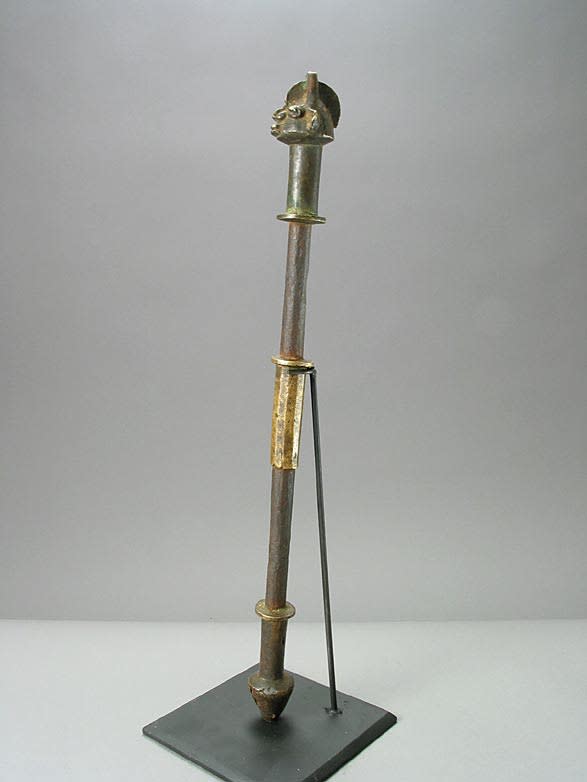Yoruba Bronze Sango Staff, 19th Century CE - 20th Century CE
Bronze
2 x 20
PF.5713
Further images
A small human head graces the top of this ritual staff. The face has bulging features, most prominently the eyes, and is crowned by two arching, perpendicular protrusions. A polygonal...
A small human head graces the top of this ritual staff. The face has bulging features, most prominently the eyes, and is crowned by two arching, perpendicular protrusions. A polygonal grip is attached midpoint on the staff. The rich brown patina that covers most of the work is lacking here, and the golden yellow color of the bronze shines through. This no doubt is a result of the frequent use of this object in rituals relating to Yoruba mythology. While the exact meaning behind this staff is unknown, (it may have functioned as a ceremonial dance wand) we can assume that it symbolized power and prestige. Staffs have long been associated with rulership, such as the baton de commandment. Whoever once held this staff must have been a distinguished individual. When we feel the weight of the bronze in our hands and hold the staff, a sense of supremacy permeates our souls. Today, we feel the power of possessing a beautiful work of art. However, a deeper, subtler sensation is also experienced: the sensation of holding the same object that an ancient ruler once utilized to maintain the continuity of their authority over the masses. In our hands, this bronze staff makes us feel that we are the king.









